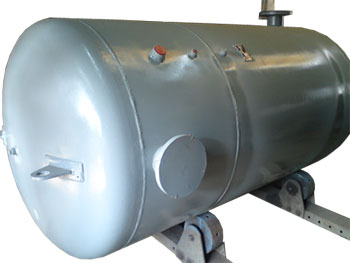
Moisture is a natural by-product of the heating effect of squeezing air molecules together in a confined space. In addition, air receivers can help remove moisture from your compressed air system. When there’s a little slack in the system it provides a space for the excess air to go, again protecting consistency of air flow. When demand on the system is high, the air receiver ensures there’s enough air to keep supplying your air tools at the correct pressure and flow rate. A receiver is basically a tank that acts like a reservoir that feeds your air compressor.
#Does air doc need a receiver free#
At that point the goods can then be released and enter free circulation.An air receiver is an essential part of any compressed air system. Once the goods have been presented to the customs authorities, a dispatch note will be received along with security approval.

When the goods arrive at their final EU destination, the customs authorities there will close the T1 procedure. There are simplified procedures available however these can only be used by authorised consignees or consignors. Alternatively, your customs broker will be able to take care of that element of your shipping. This security deposit can be covered by commercial papers, bail or cash. To complete the T1 procedure, a security deposit must be left to cover all estimated import charges and costs which will be due when the consignment finally arrives at its destination country. At this point, the 7-day countdown begins within which the freight must be presented to the customs office at its intended final destination where the goods are thoroughly examined by the authorities and an identity check will be carried out. At that point, the relevant details will be taken to create the document so the goods can easily be traced from end-to-end. How Does The T1 Customs Clearance Procedure Operate?Īs already stated, the T1 procedure will be initiated at the goods’ point of departure by the customs authorities. Instead, customs clearance will not occur for the goods until they arrive at their destined country. Goods that are heading to a final destination within the EU (like Sweden) and arrive at a UK port from a country outside the EU (such as India) require no customs clearance or duty to be paid as long as a valid T1 document exists. This will then accompany the goods while they are in transit. Once that declaration has been accepted then processed, a Transit Accompanying Document will then be created by the system. This can be done via email using XML, EDCS or the Web Portal of the NCTS itself. In order to make an application for a T1 shipping note the principal or their representative must lodge an IE015 electronic declaration to the New Computerised Transit System at the goods’ Office of Departure. How Do I Make An Application For The T1 Document? You are transporting non-EU manufactured goods through the EU where they will be stored under customs control.You are transporting non-EU manufactured goods through an EU country and, as yet, are unsure whether those goods will be staying within EU territory.You are transporting goods that are manufactured in a non-EU country through an EU country on the way to a final destination within the EU.

You will require the T1 document in the following scenarios:


At that point, any taxes and duties will then become payable. When the goods finally arrive at their destination, the process will end and the principal will be supplied with a receipt by the Office of Destination. The MRN will appear on the Transit Accompanying Document in two forms – a barcode and in numerical format. This will be generated by the electronic system when the declaration is accepted. The Transit Accompanying Document will bear a MRN (Movement Reference Number). This document must be presented along with the goods while going through any en route Office of Transit as well as when the goods finally arrive at their Office of Destination. While this is primarily a paperless system, a paper covering document called the TAD (Transit Accompanying Document) has to be sent along with the goods while they are going through transit. This guarantee will typically take the shape of an acceptance by independent parties like banks for liability both severally and jointly with the individual acting as principal.Įvery T1 declaration has to be made via the electronic NCTS (New Computerised Transit) System. Any individual who is acting in the role of principal of the transit movement has to supply a guarantee which ensures the customs taxes, duties and any other charges will be paid should the T1 document requires go unfulfilled.


 0 kommentar(er)
0 kommentar(er)
